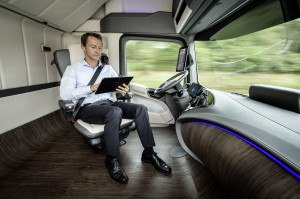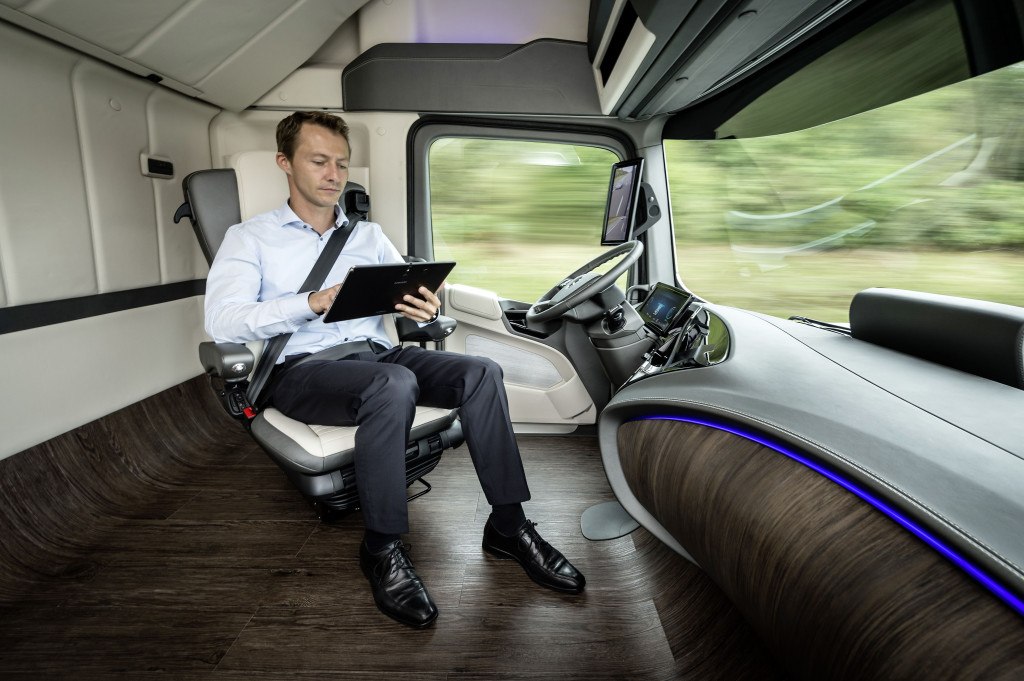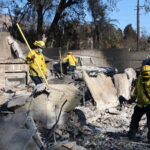While private passenger autonomous vehicles are still being tested by Google and other car manufacturers and state legislators mull rules governing driverless vehicles on roadways, their commercial use has already begun.
Maryland-based Lockheed Martin, a global security and aerospace company, and the U.S. Army, reported this summer that testing of driverless military truck convoys in a variety of settings proved successful.
Fully autonomous convoy tests involving an unmanned lead vehicle followed by a convoy of autonomous follower vehicles operated at speeds up to 40 mph, the company reported.
And Caterpillar is already using autonomous mining vehicles in the Fortescue’s Solomon iron ore mine in the Pilbara region of Western Australia. The use of up to 45 autonomous trucks is planned over the next several years at the mine.
“Fortescue’s Solomon mine is the first project of its kind for Caterpillar,” said Hans Haefeli, vice president of Caterpillar’s Advanced Components & Systems Division. “Utilizing the entire Cat MineStar System suite of surface mining technologies, both autonomous and manned machines are producing iron ore from two mines at Solomon.”
Fortescue Chief Executive Officer Nev Power said the implementation of a state-of-the-art mine control and management system at Solomon was consistent with the company’s drive for greater productivity, lower costs and a safe operating environment.
“At full operations, Solomon will have a workforce of about 1,200 people. Autonomous haulage will provide a highly efficient, productive and safe environment that complements manned operations,” Power said. “It also provides new opportunities for people with different skill sets and enhances safety through reduced interaction between heavy equipment and people in mining areas utilizing collision avoidance technology.”
Rules of the Road
In September, the California Department of Motor Vehicles announced regulations governing how manufacturers can test autonomous vehicles on California roads.
The regulations include rules on registration and reporting by manufacturers and require manufacturers to maintain $5 million insurance coverage or a surety bond. Rules governing operation of autonomous vehicles on public roads are still being developed.
“Autonomous vehicles are the future of transportation. The potential safety and mobility benefits are enormous,” said Jean Shiomoto, DMV director, “Testing on public roads is one step to developing this technology, and the DMV is excited in facilitating the advancement of autonomous vehicles in California.”
Audi, Mercedes Benz and Google received permits from the California DMV to test driverless cars on its roads.
According to a February 2014 Autonomous Vehicle Report by Julie L. Jones, executive director of the Florida Highway Safety and Motor Vehicles Department, Florida authorized testing of autonomous vehicles on its roads back in July 2012. Nevada, Washington D.C. and Michigan have also enacted laws relating to driverless vehicles.
Both Nevada and California require the testing entities or manufacturers to report crashes involving autonomous vehicles to the state within 10 days. All three states require $5 million in insurance coverage.
Florida’s crash reporting laws already require law enforcement agencies to report crashes involving property damage, bodily injury or death within 10 days of the crash. Florida intends to brand the vehicle title as “autonomous” so that any autonomous-branded vehicle could be identified through the existing crash report.
According to Jones’ report, Florida law briefly addresses liability by establishing two facts: 1) the person who engages the autonomous technology is the operator and 2) the original vehicle manufacturer is not liable for a defect in the autonomous technology unless the defect was present when the vehicle was manufactured. Michigan and Nevada have similar laws while California requires the manufacturer to sign a document binding them to the autonomous vehicle.
The Rand Corporation released a report, Autonomous Vehicle Technologies, Liability of Drivers, and Insurance, that discusses how liability may be assessed in a crash involving a driverless vehicle.
According to the report, driverless technology will most likely reduce the total number and cost of crashes in the long run.
“Human error causes the vast majority of crashes today, and, by reducing the risk of human error, AV technologies can reduce the incidence of crashes. This will, in turn, likely reduce automobile-insurance costs,” the Rand report noted.
Driverless technology will result in a shifting of responsibility for the vehicle from the human driver to the car or its manufacturer, according to the report.
“This reduction in fault may be roughly proportional to the extent to which the particular technology apparently controls the car. This shift in responsibility from the driver to the manufacturer may make no-fault automobile-insurance regimes more attractive. Cheaper and faster than product liability suits filed against manufacturers,” the report stated.
The types of crashes and injuries resulting from them could change too, the report hypothesized. Minor crashes may be eliminated entirely while more severe ones, resulting in serious injuries or fatalities, could make underwriting more difficult.
“Actuarially, it is much easier for an insurance company to calculate the expected costs of somewhat common small crashes than the costs of rarer, much larger events,” the report noted.
The Future

Mercedes Benz recently revealed its truck of the future – Future Truck 2025 – the cab will likely include a functional working area for autonomous driving phases.
Introduced at the International Commercial Vehicle Show earlier this year, its Highway Pilot system enables the truck to drive autonomously at speeds up to 50 miles per hour. It utilizes safety systems, cameras, radar sensors and vehicle-to-vehicle communication to navigate roads but the driver has the ability to resume manual control of the truck at any time. Two cameras monitor the cockpit while a sensor monitors the driver’s seat.
The company believes connectivity will increase efficiency and safety.
Was this article valuable?
Here are more articles you may enjoy.


 Teen’s Suicide Turns Mother Against Google, AI Chatbot Startup
Teen’s Suicide Turns Mother Against Google, AI Chatbot Startup  New Fire Maps Put Nearly 4M Californians in Hazardous Zones
New Fire Maps Put Nearly 4M Californians in Hazardous Zones  Wall Street Brokers Start Trading Insurer Claims From LA Fires
Wall Street Brokers Start Trading Insurer Claims From LA Fires  BYD’s Five-Minute Charges Turning Heads in EV Industry
BYD’s Five-Minute Charges Turning Heads in EV Industry 